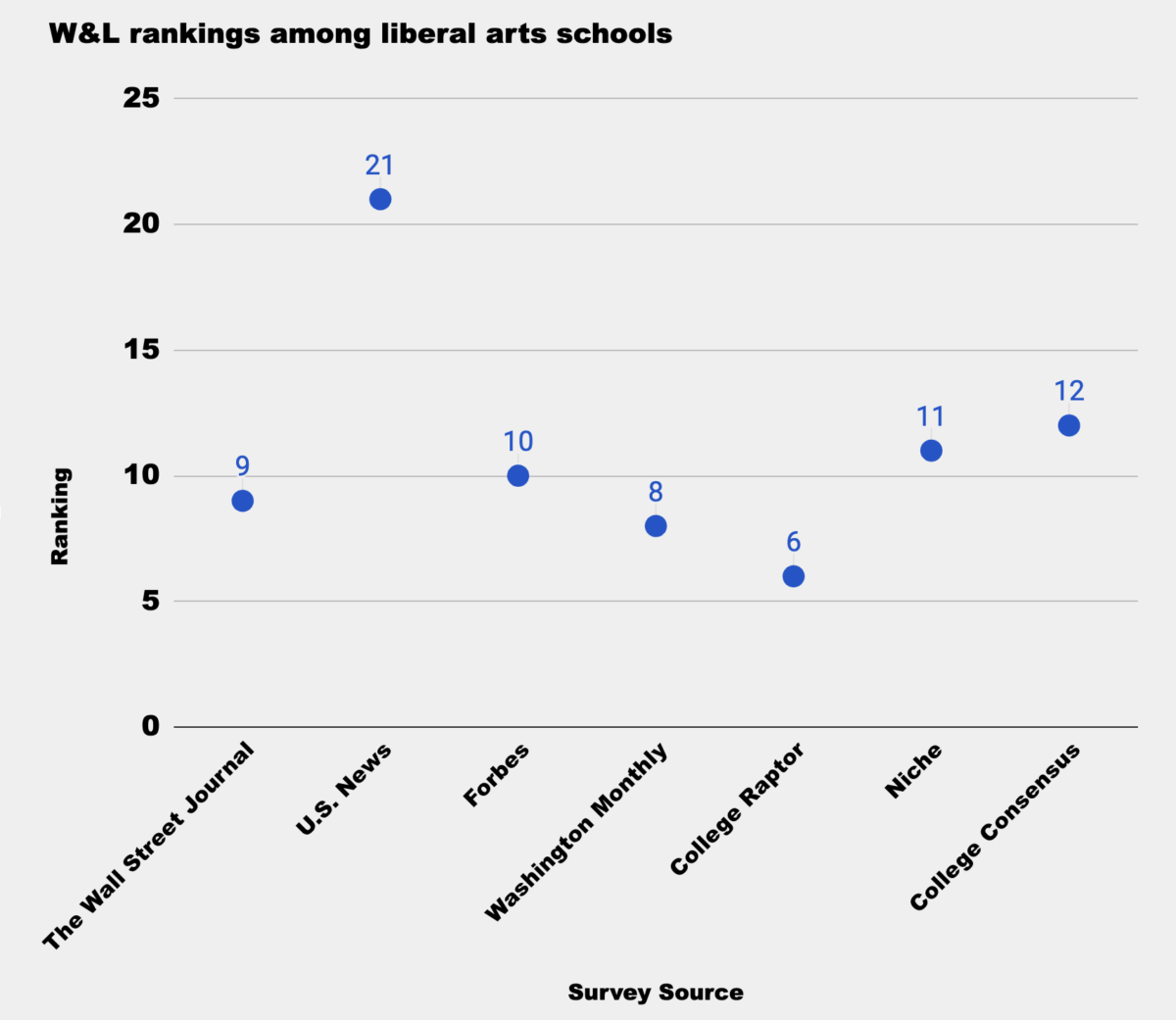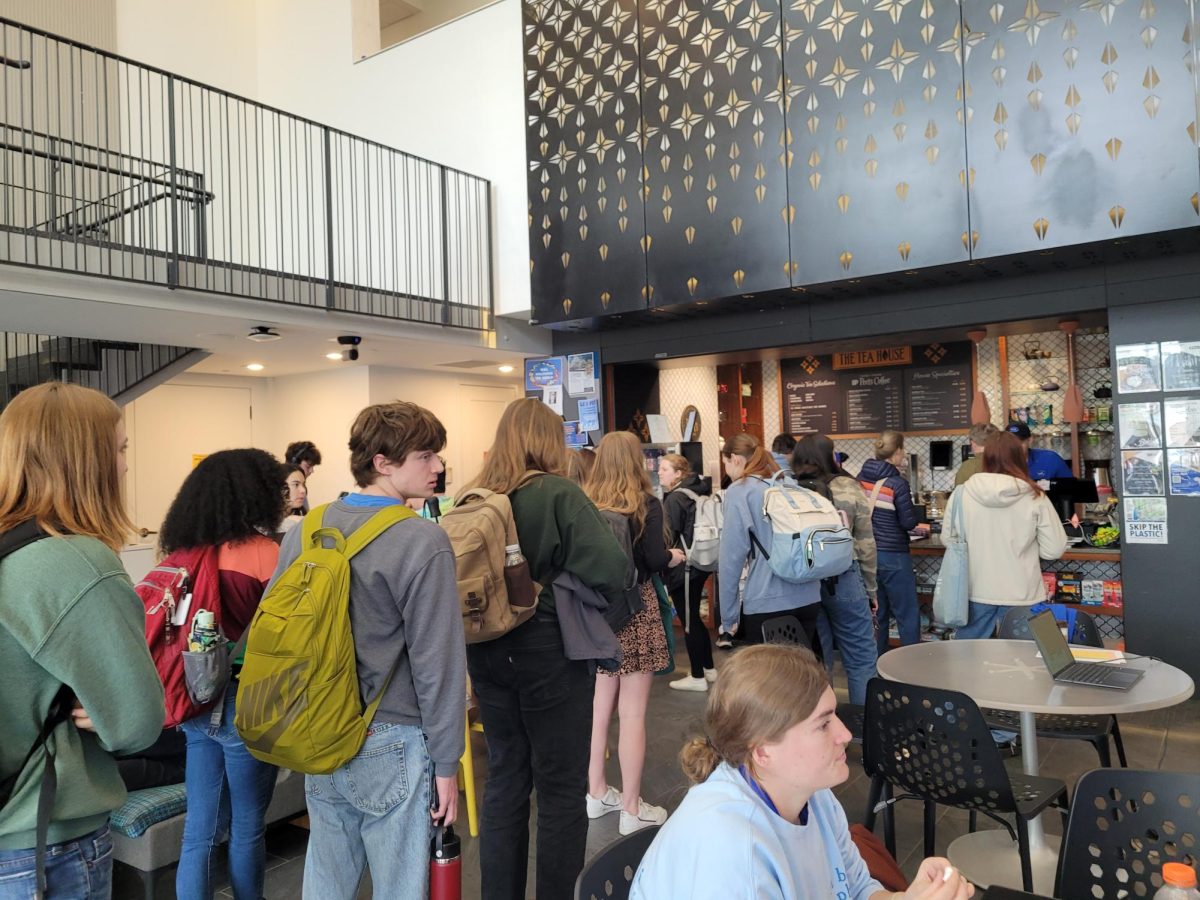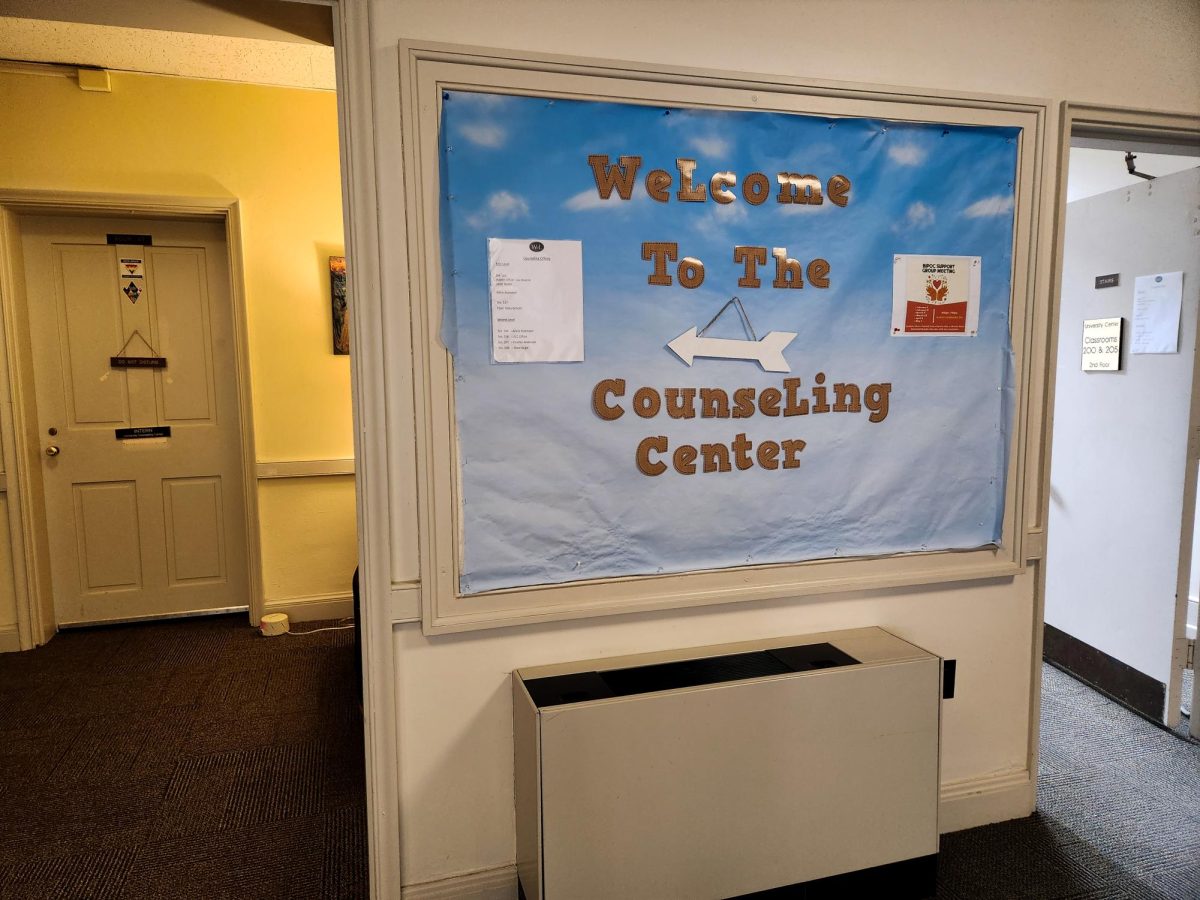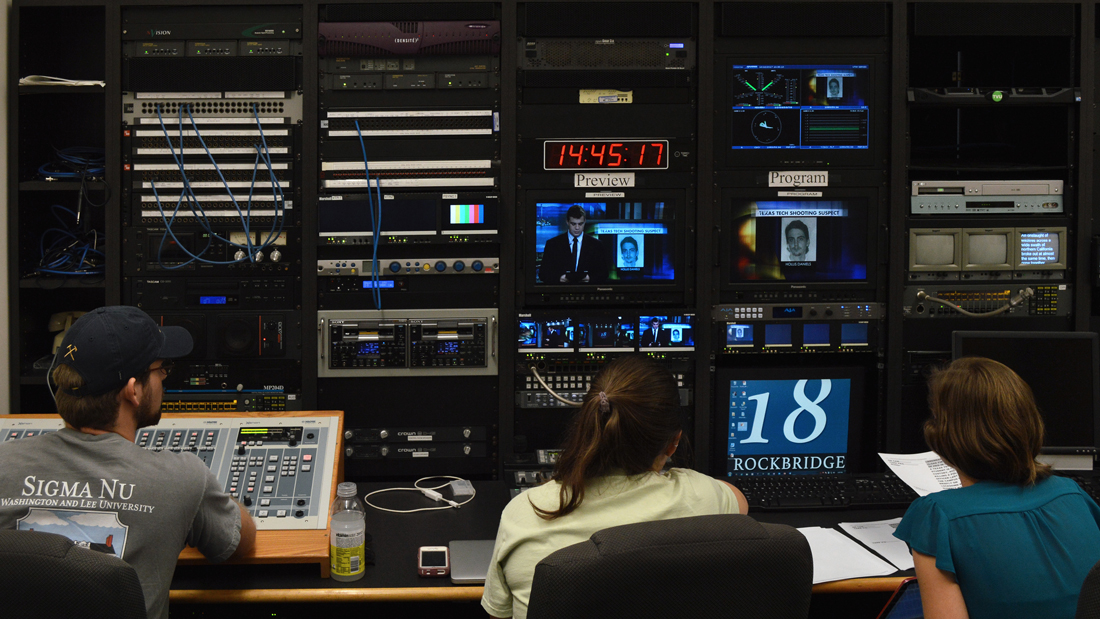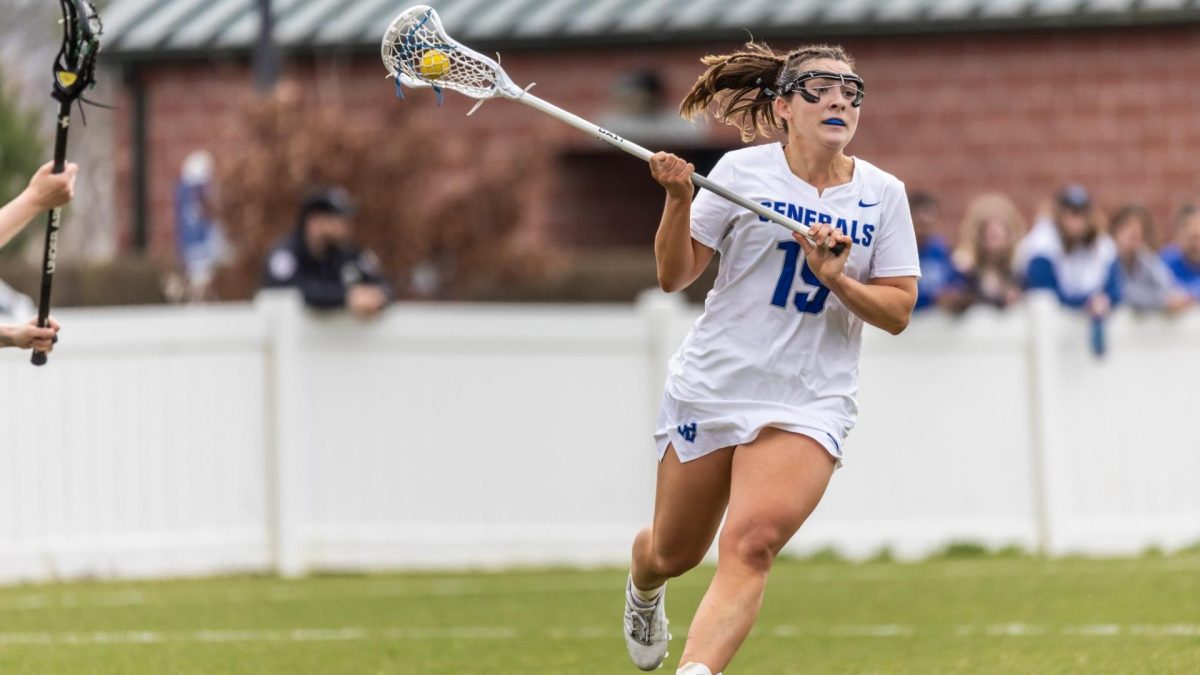U.S. News and World Report drastically changed its metrics, causing Washington and Lee to drop in liberal arts college rankings, said Bryan Price, assistant provost of accreditation and institutional research.
President William Dudley wrote in a statement on Sept. 18 that the drop from 11th in 2023 to 21st in the 2024 rankings doesn’t change Washington and Lee’s “outstanding reputation.”
“We are guided by our mission and our values, rather than by external judgments that change frequently, conflict with each other, and often fail to measure what is most important,” Dudley said.
Washington and Lee is ranked on U.S. News and World Report’s national liberal arts colleges list. The school has consistently appeared in the top 15 in recent years, Now, it is tied with Colgate College and Haverford College in 21st place.
In the 2023 edition of U.S. News Best Colleges, there were 17 indicators to determine the rankings list, Price said. Five indicators were removed, and one was added, for the 2024 edition. The methodology or weight of each of these measures was also revised.
The factor that negatively impacted the university the most was the increased concentration on the Pell-eligibility indicator, Price said.
To be considered Pell-eligible, a student must show exceptional financial need, with most of the awards given to students coming from households earning less than $30,000 per year, according to Prep Scholar.
However, the rankings just released were based on data from six years ago — a year when only 6% of incoming students were Pell-eligible. This year, 14% of the first-year class was Pell-eligible.
“We are penalized on an indicator [taken from] a point in time where our Pell-eligible students were at the lowest point in perhaps W&L history,” Price said. “That single factor alone could’ve accounted for our drop this year.”
The number of Pell-eligible students has increased since it has become a part of W&L’s strategic plan, Price said.
But Pell-eligibility composes eleven points on U.S. News’ 100-point scale, and W&L receives nearly zero points for Pell-eligibility.
Price said the university will earn more points when Washington and Lee’s current Pell eligibility percentage of 14% is applied. However, he is unsure if it will be able to bring the university back to its 2023 ranking.
According to U.S. News and World Report, other indicators were removed when calculating Washington and Lee’s ranking, such as class size, alumni giving rates, high school class standing, faculty with terminal degrees, and proportion of graduates borrowing. They also lessened the weight of graduation rate and retention rate from first-year to second-year.
Price said these are all points in which Washington and Lee did extremely well.
Washington and Lee isn’t the only institution to have tumbled in U.S. News rankings. Among national research universities, Columbia University went from second place to 18th in the 2023 rankings, the New York Times reported. The university announced this year that it will no longer submit data to U.S. News.
Nevertheless, Columbia has climbed back to 12th place in the 2024 rankings. The university submits about 130 pages with information for U.S. News’ ranking, but some other institutions do not, Price said.
The university signed an agreement with multiple schools in 2007 committing to not marketing ranking placement and boycotting the peer assessment, which asks universities to rank each other on a 5-point scale, Price said.
Only 28.6% of 600 schools participated in the peer evaluation this past year, he said.
Dudley, Vice President of Admissions Sally Richmond, Price and two members of the University Ambassadors executive team agreed that this drop in rankings will most likely not affect the number or quality of prospective students who tour or apply.
“You cannot boil an institution’s quality down to 13 single indicators,” Price said.
“It is worth knowing which schools are highly regarded,” Dudley said. “But rankings alone cannot tell an individual student which college or university will be the best fit in terms of location, size, character and culture.”



